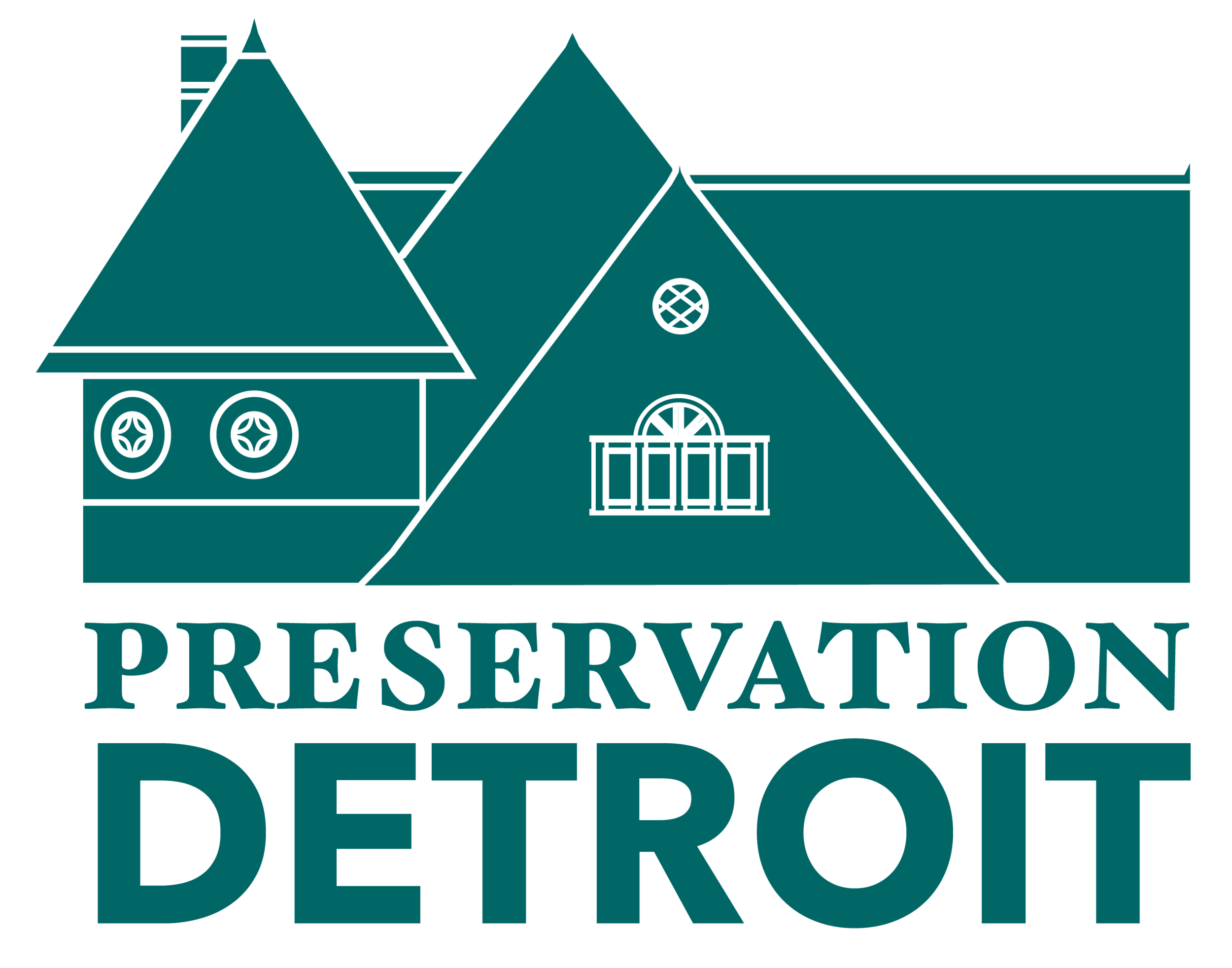Our History and Mission
Founded in 1975, Preservation Detroit is the city's oldest and largest preservation organization.
MISSION
To preserve Detroit’s historic places.
VISION
We strive to create a Detroit where cultural, architectural, and community preservation is integrated into every aspect of the city’s development.
VALUES
Collaboration: Honesty, positivity, and transparency enable strong relationships with stakeholders and partner organizations.
Craft: The traditional building trades that created our older structures are a critical aspect of the city’s future.
Diversity: Many perspectives comprise Detroit’s ongoing story.
Education: History is key in developing engaged and knowledgeable citizens.
Equity: Preservation can help create a more healthy, sustainable, and vibrant Detroit for all residents.
People: The preservation movement must be centered on community needs.
STATEMENT ON EQUALITY
Our vision is to create a Detroit where cultural, architectural, and community preservation is integrated into every aspect of the city's development. This includes Detroit's rich diversity in both residents and communities. We stand in support of a world built of racial equality, solidarity, and justice. As stewards of the past, it is our responsibility to acknowledge the inequality and injustices woven within our city's history and to reflect on ways in which we as an organization can better serve the community in more equitable ways.
OUR HISTORY
1975-1989
Preservation Detroit was founded in 1975 as Preservation Wayne, a student organization at Wayne State University. Students Allen Wallace and Marilyn Florek came together to fight the demolition of historic campus properties. The organization’s first save was the David Mackenzie House, then slated for demolition for a sewer line. With the help of like-minded individuals, this small campus organization not only halted the destruction of the historic 1895 Queen Anne residence, but also raised over $220,000 to save and restore the building, creating a new home for Detroit’s first preservation organization.
During the 1980s, Preservation Detroit partnered with Wayne State University to designate the historically and culturally valuable East Ferry Avenue as a historic district. Through tours, lectures, and community outreach, Preservation Detroit promoted the preservation of many nearby properties. Preservation Detroit received the Preservation Honor Award from the National Trust for Historic Preservation in 1986, and incorporated officially as a tax exempt 501(c)(3) in the State of Michigan.
1990-1999
Preservation Detroit grew in board strength and staff through the 1990s. The major focus during this period was the research and planning to document Ferry Avenue’s historical context and potential as a cultural destination. Preservation Detroit worked closely with the Detroit Institute of Arts Founders Society and other neighborhood stakeholders on an in-depth planning study and work plan that laid the foundation for a holistic, long-term approach to the revitalization of East Ferry Avenue, culminating in a special relationship with the new owners of Hecker-Smiley Mansion, the law firm of Charfoos & Christensen. Honorary Chairs Alan Gilmour, John Stroh III, and William Taubman led a successful corporate campaign, and a generous grant from the Chrysler Fund supported an ambitious membership campaign.
Also during this time, Preservation Detroit’s historic walking tours began to flourish and became a major component of the organization. Preservation Detroit, in partnership with Cityscape Detroit and other community partners, also launched the Loft Forum series to educate the development community about various incentives available for the rehabilitation of historic structures. And after years of advocacy, rehabilitation began on The Inn on Ferry Street in early 2000, one of the original recommendations in Preservation Detroit’s vision for Ferry Avenue.
2000-2009
In the new millennium, Preservation Detroit continued its tradition of evolving the preservation debate in Detroit and contributed to the conversation by adding to the Detroit Heritage Tour Series. High profile demolitions such as the Madison-Lenox and Statler hotels and the 2005 listing of all of “The Historic Buildings of Downtown Detroit” on the National Trust’s 11 Most Endangered Places roster drew national attention to at-risk buildings in downtown.
As heritage buildings in Detroit became increasingly threatened, Preservation Detroit was instrumental in the fight to save many of Detroit’s architectural and cultural landmarks, and continues to be today. In 2007, Preservation Detroit, in cooperation with Cass Tech Development and Preservation Society, attempted to save the historic Cass Technical High School from demolition, issuing a request for proposal for its redevelopment. Continuing the effort to adaptively reuse historic schools, Preservation Detroit held seminars on the subject in collaboration with Detroit Public Schools the same year. The organization was also involved with efforts to historically designate the Lafayette Building downtown before it was razed in 2009.
2010-Present
Today, Preservation Detroit continues to improve their existing programs, while also creating new proactive initiatives focused on community advocacy. In 2013, we commenced a survey to document the existing building stock and identify historic resources that are integral in defining Detroit’s cultural and architectural identity. In 2016, Preservation Detroit worked to create the Cass Park Historic District, saving a dense, walkable neighborhood from demolition in the Cass Corridor. In 2018, we partnered with the Arena District Neighborhood Advisory Council to help establish the Cass-Henry Historic District.
Preservation Detroit also continues to celebrate Detroit’s past and current achievements through educational tours, lectures, and publications, promoting awareness and the discussion of public history. The organization holds more than 130 tours each year, on subjects ranging from architectural history to sculpture to the history of bootlegging. In addition, advocacy events take place year round, including preservation town halls, historic district community meetings, property cleanups and more.
